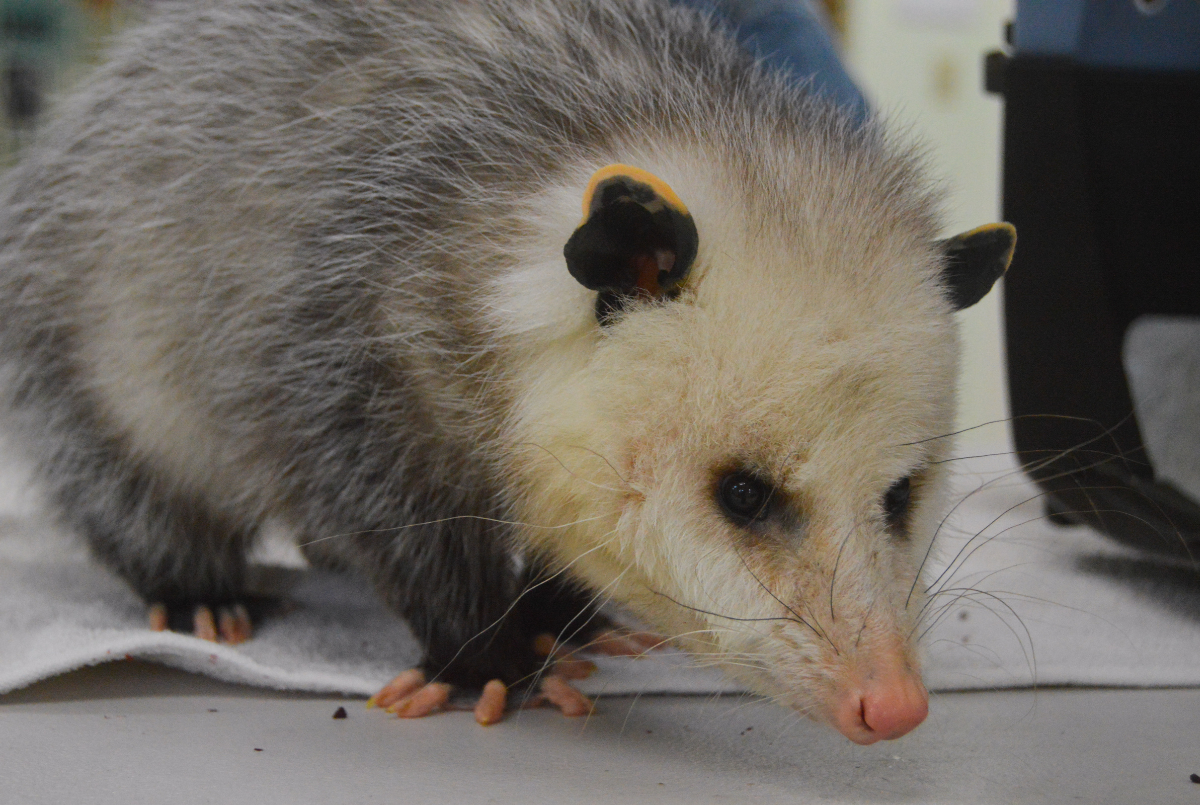Virginia Opossum

Basic Information:
Scientific Name: Didelphis virginiana
Habitat: Virginia opossums are found in many different habitats, from cities and towns to rural areas in North America. However, across their range they appear to be most numerous in wooded areas adjacent to water bodies such as creeks, rivers, and lakes.
Diet: Opossums have an omnivorous diet which primarily includes fruit, insects, eggs, and small vertebrates. Like raccoons, opossums can be found in urban environments, where they eat pet food, rotten fruit, and human garbage.
Size: 0.5 to 1 foot tall / 1.2 to 3 feet long
Weight: 4 to 15 pounds
Lifespan: 1 to 2 years in the wild. Up to 4 years in human care.
Distribution Map:
I.U.C.N. Conservation Status:

What does this mean?
Least Concern – a species determined by the International Union for Conservation of Nature (I.U.C.N.) to be pervasive, abundant, and thriving.
Our Virginia Opossum:
Darwin (Male) – Estimated Date of Birth July 1, 2023
About Virginia Opossums:
The Virginia opossum is the original opossum and comes from the Algonquian word wapathemwa (or “white animal”). While there are possums in Australia, they are more closely to other Australian marsupials like kangaroos and koalas than they are with the Virginia opossum. That being said, the Virginia opossum is a marsupial. In fact, it is the ONLY marsupial in North America. This means that they have pouches for their young. After a gestation period of 11-13 days, mother opossums give birth to between 8 and 20 offspring the size of honey bees. These joeys remain in their mother’s pouch until they are a little over 2 months old. From here, they ride on their mother’s back and learn from their mom for the next few months before venturing out on their own. Unfortunately, not many of them make it and only 1 in 10 actually survive to reproductive adulthood. Through this journey, an opossum’s core defense mechanism is feigning death (or “playing possum”). This tactic is done to dissuade predators who want to eat living prey as well as making scared animals realize the opossum is not a threat. If that fails, an opossum can bite and scratch. They are also known for being one of the primary predators of ticks. One opossum is capable of eating thousands of ticks every week!
Did You Know?!
- The Virginia opossum is North America’s only marsupial. A marsupial is an animal with a pouch, like a kangaroo or a koala.
- Virginia opossums “play dead” when they feel threatened by curling up on the ground with their mouth open and tongue hanging out. Their breathing slows and stays that way for a few minutes up to several hours.
- Virginia opossums have 50 teeth, the most of any land mammal.
- The Virginia opossum’s tail is prehensile. It is used to grasp things and aid in climbing. Young ones will sometimes hang from their tail but a full grown adult cannot.
- Virginia opossum feet have opposable thumbs on their back feet for grasping! Their thumbs lack claws and are known as halluxes.
- Virginia opossums rarely transmit diseases to humans and are surprisingly resistant to rabies. This is mainly because they have lower body temperatures than most placental mammals.
- Virginia opossums limit the spread of Lyme disease because they feed on most disease carrying ticks.
